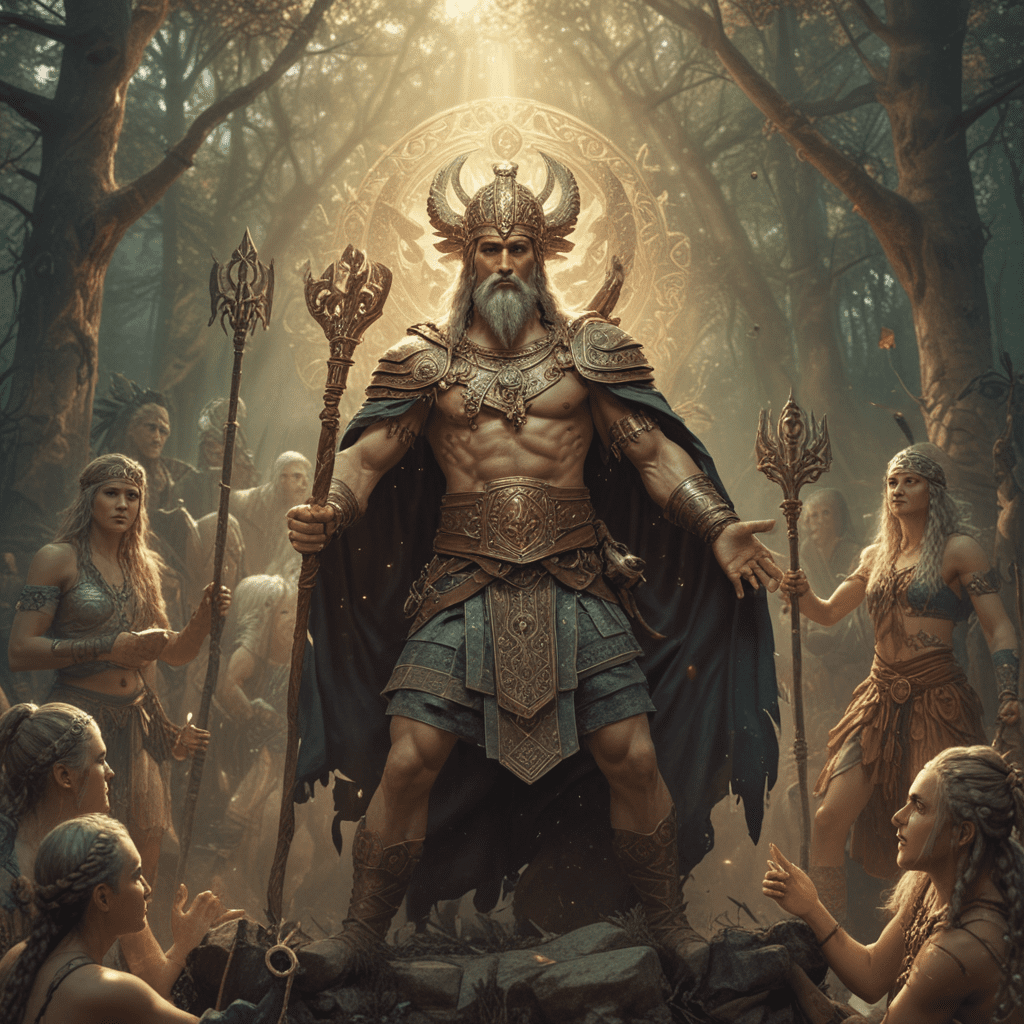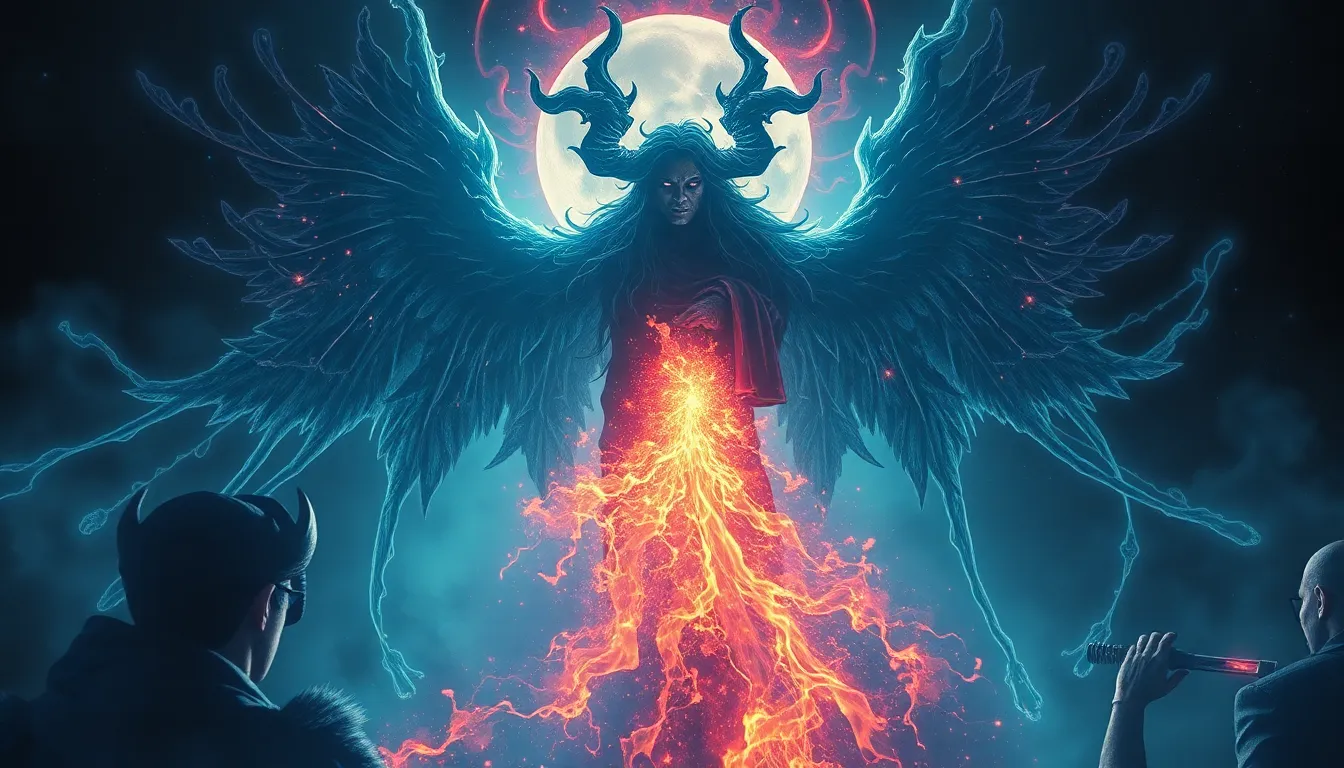1. Introduction to Slavic Mythology
Slavic mythology, a rich tapestry of beliefs and legends, offers a glimpse into the ancient world of the Slavic people. Rooted in animism, nature worship, and a profound connection to the land, Slavic mythology is a treasure trove of intriguing deities and mythological creatures. This article delves into some of the key deities of Slavic mythology, exploring their origins, attributes, and significance.
2. Rod: The Primordial Deity
Rod, revered as the progenitor of all Slavic deities, occupies a central position in Slavic mythology. As the supreme creator and ruler of the universe, Rod is believed to have emerged from an egg that floated in the primordial chaos. He is often depicted as a grey-bearded, wise elder, embodying the wisdom and authority of the divine. Rod's name, meaning "genesis" or "origin," reflects his role as the source and foundation of all things.
3. Svarog: The God of Fire and the Heavens
Svarog, an influential deity in Slavic mythology, is closely associated with celestial bodies, particularly the Sun. He is believed to have created the Sun and set it in the sky to illuminate the world. As the god of fire, Svarog is also revered as a master blacksmith, crafting weapons and tools for the gods and humans alike.
4. Perun: The God of Thunder and War
Perun, the mighty god of thunder and war, possesses a formidable presence in Slavic mythology. Armed with a powerful axe, he unleashes deafening thunderclaps and commands the tempestuous skies. Perun is also regarded as the protector of warriors and the patron of princes. His symbol, the thunderbolt, represents strength, courage, and the power of the heavens.
5. Veles: The God of the Underworld and Cattle
Veles, the enigmatic deity of the underworld and cattle, occupies a complex and ambivalent position in Slavic mythology. As the god of the underworld, he rules over the realm of the dead and is associated with wealth, fertility, and the earth. However, Veles is also a trickster and a shape-shifter, often outwitting both humans and gods.
6. Mokosh: The Goddess of Earth and Fate
Mokosh, the revered goddess of earth and fate, holds a special place in Slavic mythology. She is associated with the land, fertility, and weaving. As the spinner of human destinies, Mokosh's threads determine the fate of individuals and communities. Her symbol, the distaff, represents the interconnectedness of life, death, and rebirth.
7. Morana: The Goddess of Winter and Death
Morana, the goddess of winter and death, brings a chilling presence to Slavic mythology. She personifies the cold season, when nature lies dormant and life seems to fade away. In some traditions, Morana is associated with fertility and rebirth, symbolizing the eternal cycle of life and death.
8. Dazhbog: The God of the Sun
Dazhbog, the radiant god of the Sun, is central to Slavic mythology. He is regarded as the bringer of warmth, light, and life. Dazhbog's name, derived from the word "give," reflects his role as the provider of sustenance and prosperity. He is often depicted as a handsome young man with golden hair and fiery eyes.
9. Lada: The Goddess of Love and Marriage
Lada, the nurturing goddess of love and marriage, embodies the power of affection and harmony in Slavic mythology. She is believed to protect young couples, bless marriages, and ensure the happiness and well-being of families. Lada's name resonates with the word "love" and she is often invoked during wedding ceremonies and springtime festivals.
10. Stribog: The God of the Winds
Stribog, the god of the winds, controls the forces of nature in Slavic mythology. He commands the winds, storms, and tempests, influencing the weather and guiding the course of ships. Stribog's association with the sky and the vastness of nature lends him a powerful and awe-inspiring presence.
FAQs
Q: Who was the most important deity in Slavic mythology?
A: Rod, the primordial deity, is considered the most significant god in Slavic mythology as the creator and ruler of the universe.
Q: What are some of the common symbols and motifs in Slavic mythology?
A: Thunderbolts, axes, the Sun, the Moon, water, and horses play prominent roles as symbols and motifs throughout Slavic mythology.
Q: How did Slavic mythology influence modern culture?
A: Slavic mythology has left a lasting impact on modern culture, influencing folklore, literature, art, and even language in Slavic and non-Slavic societies.



